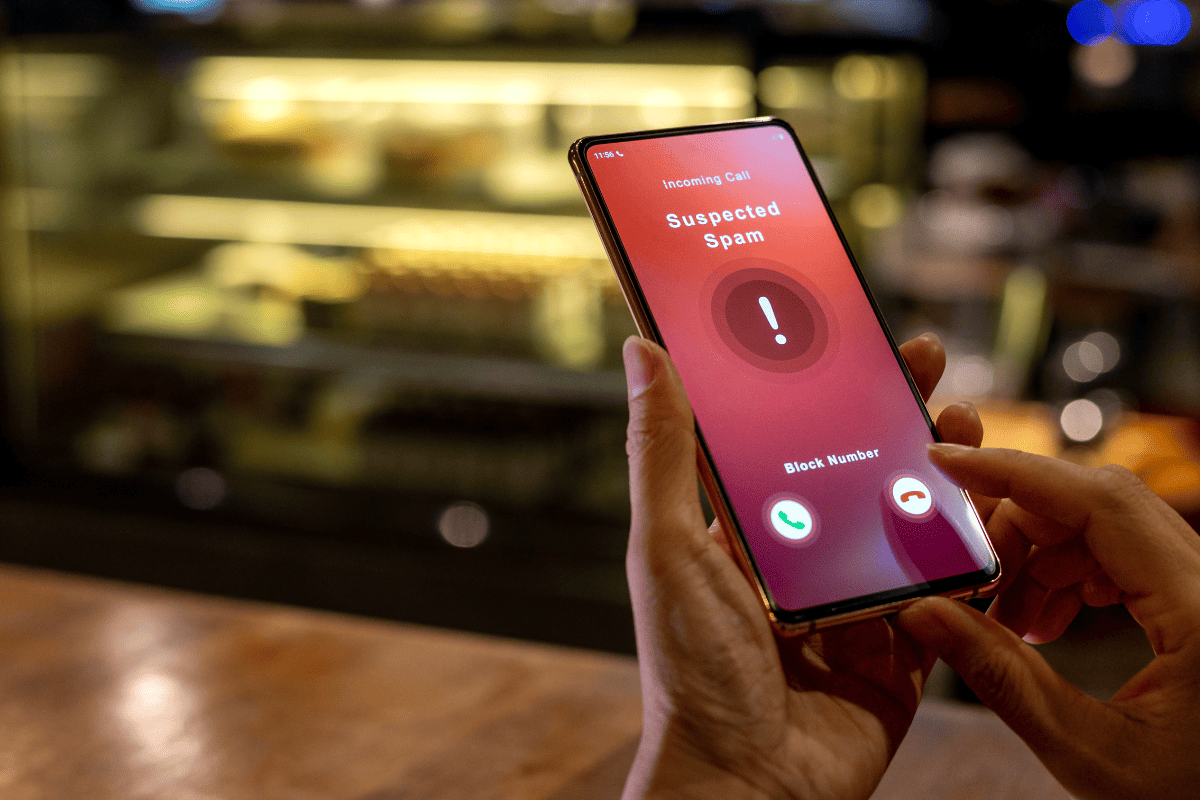Protect your digital identity and keep your information safe.
If you’ve ever received a phone call from an unfamiliar number, you know the drill: a voice asks about an auto warranty that’s about to expire or a financial offer that’s too good to be true. If you hang up, they’ll call back again from a different number. If you ask questions, you’ll get transferred to a live person pushing you to sign a new contract or accept a loan.
No matter what, the goal of these scam calls is to convince you to share personal information like addresses, financial details, and Social Security or driver’s license numbers. There’s no sign of such calls slowing down, either. According to a mid-year report from Robokiller, in the first half of 2023, Americans received 5 billion robocalls a month and lost an estimated $33 billion to scammers. Robotexts, meanwhile, are also increasing, with more than 75 billion delivered so far this year.
And that comes in the wake of a major crackdown on such illicit attempts. Just last week, the Federal Communications Commission (FCC) imposed a record $300 million fine on the network of scammers who coordinated the illegal auto warranty robocalls campaign in 2021, when 500 million phone numbers around the world received 5 billion robocalls in just three months.
Other types of calls are common: fake inquiries from charitable organizations, supposed customer service communications from the IRS and Microsoft, illicit offers from credit card companies, bogus threats from student debt lenders, and false disconnection notices from utility companies. Scammers use widely available tools to route their robocalls through different carriers and networks, making it nearly impossible to determine exactly where they originate. And protections for cell phones are still not as robust as those for landlines, which are used by less than 10% of American households.
New FCC rules about robocalls, adopted in 2017, strengthened the federal Do Not Call Registry, which was supposed to stem the tide of spam calls. But experts say it’s more of a tennis net trying to stop a flood. Still, it’s the first line of defense alongside other tips that CMIT Solutions has accumulated below. Consider this an important part of protecting your identity and your data.
- Add your numbers to the national Do Not Call Registry. Once your number has been listed on the Registry for a month, you can start reporting unwanted calls to the Federal Trade Commission. Make sure you add cell, office, and home numbers to provide some semblance of overall protection, though this is only the first step toward a multi-layered defense—not a surefire way to stop all calls.
- Block unfamiliar or persistent numbers. The most straightforward way to avoid robocalls is not answering in the first place—especially when it comes to calls received on your cell phone. The next step is to use your phone to block those numbers that arrive persistently or don’t leave pertinent messages. This advice aligns nicely with the number one rule for preventing email-based ransomware, which is not to click links or open attachments from unfamiliar email addresses.
- Use Do Not Disturb to prevent interruptions. If the robocalls won’t stop, toggle on an option like Do Not Disturb on iPhone or Android, which won’t show notifications for incoming calls unless you specifically allow them from that number. “Do Not Disturb” can serve as a filter to allow only the people you know or only those people stored in your contacts to call you.
- Don’t engage the caller. If you do find yourself on the phone with a potential spammer, don’t respond to invitations to press a number to opt out—that will let the hackers know your number is working and you may still be transferred to a live person. The best bet in most instances is to hang up once you know the call is unwanted. Be careful what you say, too; even AI-powered robocalls can ask natural-sounding questions like “Can you hear me?” If you answer “Yes,” that voice signature can be used at a later date to authorize fraudulent charges via telephone. Yelling at or berating spammers can also lead to unintended consequences like spoofing your number, calling continuously, or escalating to blackmail threats.
- Check out apps that help to block robocalls. Several cell phone carriers automatically screen calls to confirm the phone number matches the registered sender name—if you’ve ever seen “Scam Likely” show up on your home screen when an incoming call arrives, you’ll know it’s working. But networks of scammers circumvent these rules with shell companies and stolen identities. T-Mobile, Sprint, Verizon, and AT&T all offer apps that block known spam callers and flag certain numbers as suspicious, dramatically cutting the number of marketing calls you receive. In addition, some email apps can integrate with your smartphone’s blocked list, preventing known spammers from reaching you via text, phone, or email.
At CMIT Solutions, we understand the complexities of today’s digital world. We recognize the fact that threats now extend beyond computers and networks to our phones and messaging systems. Our goal is to provide comprehensive cybersecurity protection to secure your business, your data, your devices, and your employees.
Contact us today to learn more about blocking robocalls and keeping identities safe.

